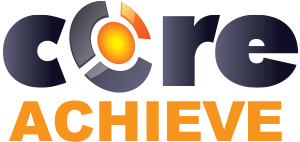The Benefits of Standardization and Achieving Them with a LMS
April, 11 2023
Other posts:
Enhancing Team Dynamics for Effective Group Decision-Making with LMS Integration
Organizations increasingly rely on collaborative efforts to solve complex problems, innovate, and adapt to change, but how do we ensure that collaboration is happening.
Maximizing Small Business Potential with Training Technology
Training technologies can push small businesses ahead of their competitors, but what are the factors that go into choosing the right technology?
Unlocking Employee Potential: The Transformative Benefits of an Interactive Learning Management System (LMS)
Interactive training allows for unlocking employee potential, but how is it done?
Building a Robust Sales Pipeline with Training
Every organization wants a streamlined sales pipeline, but building one requires a series of interlocking activities with one of the most important being training.
Strategies for Adapting In-Person Training to Online Platforms
Online training is one of the most flexible ways of delivering training across organizations, but how do you even begin to adapt in-person training into online?
How much productivity is your organization losing from redundancy? Redundancy is only a small piece of what standardization can help an organization fix.
Businesses and organizations need standardization to achieve efficiency, consistency, and quality in their operations. However, achieving a level of standardization requires careful implementation and training. A learning management system (LMS) provides an effective and flexible solution for standardization.
A LMS allows an organization to deliver training content to all employees, regardless of their location or role in the company. This content can be updated and modified in real-time, ensuring that all employees are receiving the latest information and instructions.
Benefits of Standardization
Standardization has numerous benefits for businesses and organizations like reducing errors or improving communication. Furthermore, by standardizing processes and procedures, businesses can achieve greater efficiency, consistency, and quality in their operations. All the above leads to saving money and more innovation—essential for a business to grow and succeed.
Reduced Errors
Standardization reduces errors by creating established procedures and guidelines that all employees can follow. One of the leading problems is ambiguity on how to respond to certain situations, especially damaging in industries like healthcare or manufacturing.
Improved Communication
Communication can vary significantly between departments, levels, locations, and even peers. Standardization helps to create a common vocabulary, understandable formats, and shared understanding that improves communication across the entire organization.
Greater Efficiency
Redundancy can spawn from an inconsistent understanding of procedures or a lack of a unifying language, both of which can be helped by standardization. With less redundancy comes more progress and more deadlines met on time, or greater efficiency.
More Consistency
Standardization is the key part of achieving consistency throughout an organization. By establishing common processes and procedures, businesses can ensure that all employees are following the same guidelines, resulting in consistent output.
Higher Quality
Standardization leads to higher quality because all employees are trained on the same processes, procedures, and best practices. Much less will be lost in translation between all the different moving parts of an organization.
Saving Money
If one pictures an organization as a series of pipes, then holes in the pipes caused by redundancy, inefficiency, errors, and poor communication, are leaking resources like time. Standardization can help plug these holes, resulting in cost savings for businesses.
Fosters Innovation
By freeing up time and resources through standardization, people can focus on innovating and improving their products or services. Time spent reconfirming between colleagues or fixing errors can be devoted more to the projects themselves.
LMS and Standardization
The ability of a LMS to deliver consistent and updated training makes a LMS indispensable for standardizations. With a LMS, businesses can easily create and distribute standardized training material to all employees.
Not only does a LMS ensure that every part of an organization receives the same, accessible information, but it also allows for tracking and assessment of employee progress. Meaning the organizations can guarantee who has completed the necessary training and who needs additional support to ensure that everyone is fully trained with standardized knowledge.
Furthermore, a LMS can facilitate the creation of quizzes and assessments to measure the understanding of the material presented. This provides an additional level of assurance that the information has been internalized by employees and that the standardization efforts can be implemented.
In conclusion, standardization is essential for any business that wants to achieve consistency, higher quality output, cost savings and foster innovation. A LMS can provide a powerful tool to facilitate this standardization process, ensuring that employees have access to consistent and up-to-date training materials, while giving reassurance that the standardization training has been internalized.
Get started with CoreAchieve for free.
Photo by Laura Ockel on Unsplash

Leave comment: